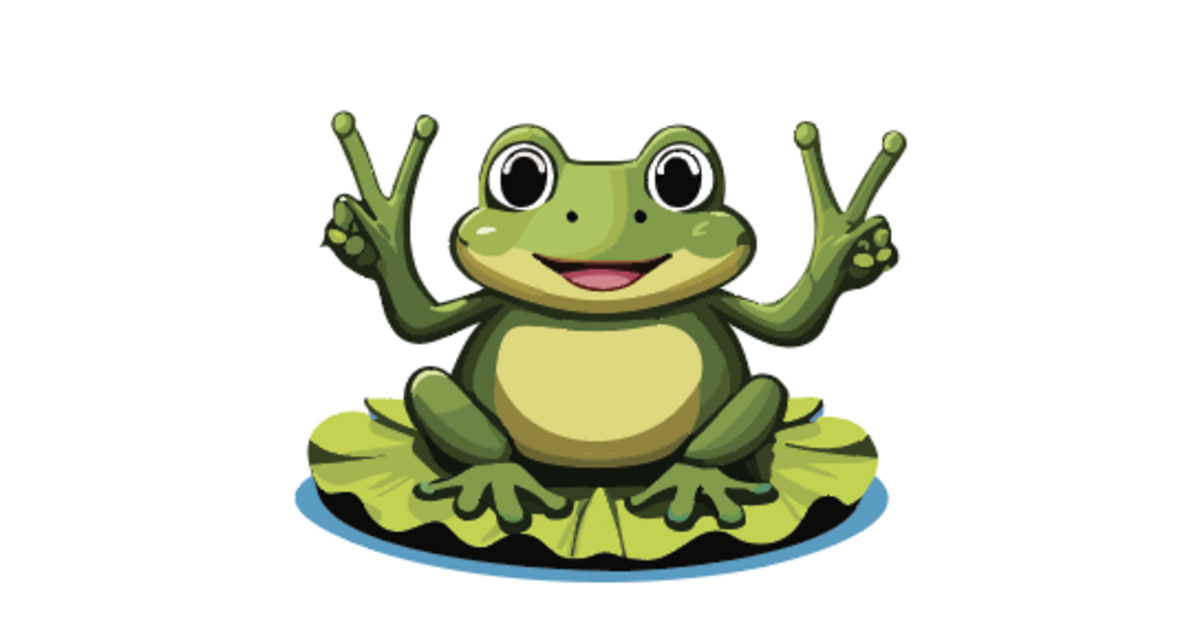DoomsdaysCW<p>Excerpt from "How to make your yard a friendlier place for <a href="https://kolektiva.social/tags/pollinators" class="mention hashtag" rel="nofollow noopener noreferrer" target="_blank">#<span>pollinators</span></a>"</p><p><a href="https://kolektiva.social/tags/Pollination" class="mention hashtag" rel="nofollow noopener noreferrer" target="_blank">#<span>Pollination</span></a> doesn't only produce more plants – it also helps make fruits and vegetables larger, more abundant, and even more flavorful.</p><p>by Abby Jackson, January 22, 2024<br>The Cool Down [<a href="https://kolektiva.social/tags/US" class="mention hashtag" rel="nofollow noopener noreferrer" target="_blank">#<span>US</span></a>-based publication]</p><p>How to Support Pollinators in Your Yard</p><p>"Plants are the foundation for every living thing on our planet, and without pollination, plants would be unable to reproduce and our food supply would be at risk.</p><p>"Here are a few things you can do to support their safety and protect our food resources for years to come:</p><p> - Avoid <a href="https://kolektiva.social/tags/pesticides" class="mention hashtag" rel="nofollow noopener noreferrer" target="_blank">#<span>pesticides</span></a>, <a href="https://kolektiva.social/tags/herbicides" class="mention hashtag" rel="nofollow noopener noreferrer" target="_blank">#<span>herbicides</span></a>, and synthetic <a href="https://kolektiva.social/tags/fertilizers" class="mention hashtag" rel="nofollow noopener noreferrer" target="_blank">#<span>fertilizers</span></a> as much as possible.</p><p> - Choose flowering plants that produce pollen and nectar, that are native to your area, and that support a variety of pollinators. Avoid hybrid plant varieties, as they've been bred specifically for aesthetics and may have unattractive nectar.</p><p> - You can use the <a href="https://kolektiva.social/tags/NationalWildlifeFederation" class="mention hashtag" rel="nofollow noopener noreferrer" target="_blank">#<span>NationalWildlifeFederation</span></a>'s <a href="https://kolektiva.social/tags/NativePlant" class="mention hashtag" rel="nofollow noopener noreferrer" target="_blank">#<span>NativePlant</span></a> finder to discover plants in your area that attract pollinators. The <a href="https://kolektiva.social/tags/AudubonSociety" class="mention hashtag" rel="nofollow noopener noreferrer" target="_blank">#<span>AudubonSociety</span></a> has a similar search that identifies native plants in your area that attract birds.</p><p> - Follow seasonal changes and diversify your yard with plants that bloom at different times of the year for year-round blooms.</p><p> - Remove <a href="https://kolektiva.social/tags/InvasivePlants" class="mention hashtag" rel="nofollow noopener noreferrer" target="_blank">#<span>InvasivePlants</span></a> and weeds when possible.</p><p> - Provide a hydration station. Birdbaths are hazards for many pollinators because they can easily drown in them and because they are preyed on by other animals. Filling a shallow bowl with pebbles or marbles to a low water level will allow pollinators to drink while sitting on a perch. [I do create "bee baths" with marbles and rocks. I will be very cautious if I decide to provide "bird baths" this summer]</p><p> - Provide nesting sides, like a <a href="https://kolektiva.social/tags/BeeHouse" class="mention hashtag" rel="nofollow noopener noreferrer" target="_blank">#<span>BeeHouse</span></a>. [Old logs can be good for some bees]</p><p> - Use certain plants strictly as food for the larvae of pollinators to ensure they will have enough energy to grow and frequent your yard. For example, <a href="https://kolektiva.social/tags/MonarchCaterpillars" class="mention hashtag" rel="nofollow noopener noreferrer" target="_blank">#<span>MonarchCaterpillars</span></a> [and <a href="https://kolektiva.social/tags/TussockMothLarvae" class="mention hashtag" rel="nofollow noopener noreferrer" target="_blank">#<span>TussockMothLarvae</span></a>] love to eat <a href="https://kolektiva.social/tags/milkweed" class="mention hashtag" rel="nofollow noopener noreferrer" target="_blank">#<span>milkweed</span></a>, and <a href="https://kolektiva.social/tags/BlackSwallowtailCaterpillars" class="mention hashtag" rel="nofollow noopener noreferrer" target="_blank">#<span>BlackSwallowtailCaterpillars</span></a> feed on <a href="https://kolektiva.social/tags/parsley" class="mention hashtag" rel="nofollow noopener noreferrer" target="_blank">#<span>parsley</span></a> [I did not know this! I will provide some parsley for their consumption this year!]</p><p>"<a href="https://kolektiva.social/tags/Rewilding" class="mention hashtag" rel="nofollow noopener noreferrer" target="_blank">#<span>Rewilding</span></a> your yard with native plants and <a href="https://kolektiva.social/tags/clovers" class="mention hashtag" rel="nofollow noopener noreferrer" target="_blank">#<span>clovers</span></a>, designating a garden bed to attract pollinators, or even having a pollinator-friendly plant in a pot on your <a href="https://kolektiva.social/tags/balcony" class="mention hashtag" rel="nofollow noopener noreferrer" target="_blank">#<span>balcony</span></a> are other ways you can make your area a friendlier space for pollinators. </p><p>"Any action that helps pollinators is a positive action that benefits you and the animals and nature around you."</p><p>Read more:<br><a href="https://www.thecooldown.com/green-home/how-to-make-your-yard-a-friendlier-place-for-pollinators/" rel="nofollow noopener noreferrer" translate="no" target="_blank"><span class="invisible">https://www.</span><span class="ellipsis">thecooldown.com/green-home/how</span><span class="invisible">-to-make-your-yard-a-friendlier-place-for-pollinators/</span></a><br><a href="https://kolektiva.social/tags/GardeningForPollinators" class="mention hashtag" rel="nofollow noopener noreferrer" target="_blank">#<span>GardeningForPollinators</span></a> <a href="https://kolektiva.social/tags/GardeningForBees" class="mention hashtag" rel="nofollow noopener noreferrer" target="_blank">#<span>GardeningForBees</span></a> <a href="https://kolektiva.social/tags/Gardening" class="mention hashtag" rel="nofollow noopener noreferrer" target="_blank">#<span>Gardening</span></a> <a href="https://kolektiva.social/tags/SolarPunkSunday" class="mention hashtag" rel="nofollow noopener noreferrer" target="_blank">#<span>SolarPunkSunday</span></a></p>
Recent searches
No recent searches
Search options
Only available when logged in.
toad.social is one of the many independent Mastodon servers you can use to participate in the fediverse.

Mastodon server operated by David Troy, a tech pioneer and investigative journalist addressing threats to democracy. Thoughtful participation and discussion welcome.
Administered by:
Server stats:
382active users
toad.social: About · Profiles directory · Privacy policy
Mastodon: About · Get the app · Keyboard shortcuts · View source code · v4.3.7
#blackswallowtailcaterpillars
0 posts · 0 participants · 0 posts today
Tre Cooper<p>Our black swallowtail caterpillar count is now up to eight, which is causing me some slight amount of stress. Partner returned to the plant nursery for more parsley. Successful trip, but it came at a price - more caterpillars! Not sure how we're going to feed them all. </p><p>Several years ago we had 21. They were eating like locusts, so we gave them some grocery-store parsley. It was lush and green and we walked away thinking that would hold them for a goodly time. A little while later we glanced in to discover them lying cold and unresponsive on the ground.</p><p>The horror. I could have kicked myself for not considering the possibility sooner. Pesticides! Fortunately we had what we hoped was the antidote. Partner mixed up a syringe full of very diluted Atropine and we dripped it over their tiny faces one by one. And then we waited. </p><p>Would you believe 17 of them recovered? ❣️</p><p>Jusr remember: supermarket stuff = ☠️</p><p><a href="https://universeodon.com/tags/nature" class="mention hashtag" rel="nofollow noopener noreferrer" target="_blank">#<span>nature</span></a> <a href="https://universeodon.com/tags/caterpillars" class="mention hashtag" rel="nofollow noopener noreferrer" target="_blank">#<span>caterpillars</span></a> <a href="https://universeodon.com/tags/BlackSwallowtailCaterpillars" class="mention hashtag" rel="nofollow noopener noreferrer" target="_blank">#<span>BlackSwallowtailCaterpillars</span></a> <a href="https://universeodon.com/tags/science" class="mention hashtag" rel="nofollow noopener noreferrer" target="_blank">#<span>science</span></a></p>
Tre Cooper<p>Went to our favorite plant nursery this past week to see what we could find. While there, the owner pointed to a pile of sad-looking parsley she was tossing out and said with a laugh, "If you want any, just take it. I know you people are butterfly freaks."</p><p>Little did she realize that she had given us more than she realized, because a few days later, look what we found hidden in the leaves.❣️</p><p>There are actually three, but the one pictured is the biggest. We brought them inside and set them up in a terrarium to keep them safe. </p><p><a href="https://universeodon.com/tags/photography" class="mention hashtag" rel="nofollow noopener noreferrer" target="_blank">#<span>photography</span></a> <a href="https://universeodon.com/tags/NaturePhotography" class="mention hashtag" rel="nofollow noopener noreferrer" target="_blank">#<span>NaturePhotography</span></a> <a href="https://universeodon.com/tags/caterpillars" class="mention hashtag" rel="nofollow noopener noreferrer" target="_blank">#<span>caterpillars</span></a> <a href="https://universeodon.com/tags/VeryHungryCaterpillars" class="mention hashtag" rel="nofollow noopener noreferrer" target="_blank">#<span>VeryHungryCaterpillars</span></a> <a href="https://universeodon.com/tags/BlackSwallowtailCaterpillars" class="mention hashtag" rel="nofollow noopener noreferrer" target="_blank">#<span>BlackSwallowtailCaterpillars</span></a></p>
ExploreLive feeds
Mastodon is the best way to keep up with what's happening.
Follow anyone across the fediverse and see it all in chronological order. No algorithms, ads, or clickbait in sight.
Create accountLoginDrag & drop to upload

